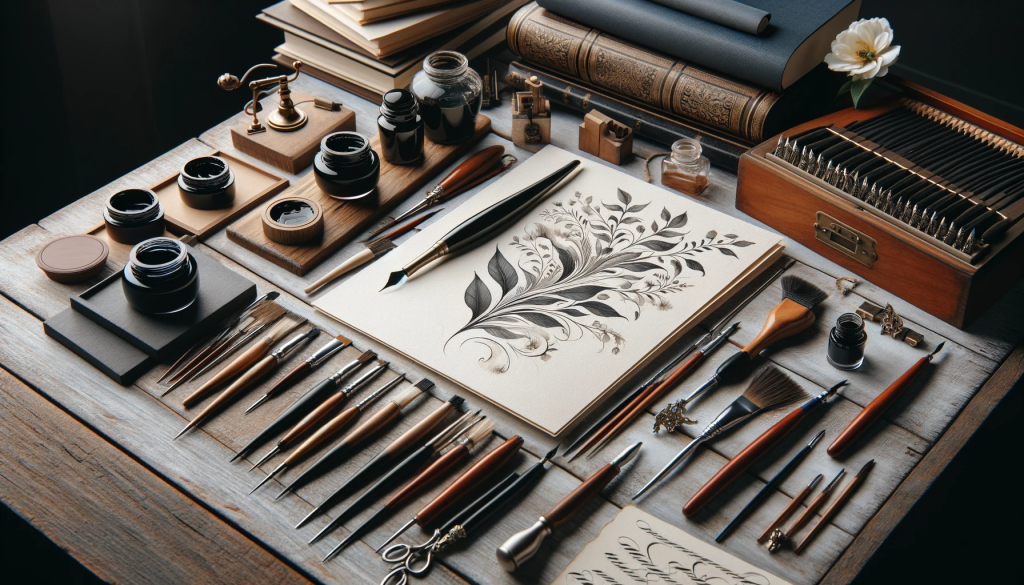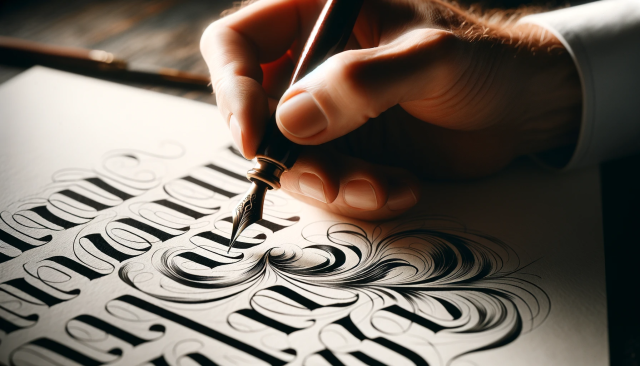Introduction
Calligraphy, the art of beautiful writing, has fascinated cultures around the world for centuries. More than just a form of handwriting, calligraphy is a visual art where letters are created with precision and creativity. This blog explores the enchanting world of calligraphy, tracing its rich history and guiding beginners on how to embark on this artistic journey.
Understanding the Basics of Calligraphy
Calligraphy varies greatly across cultures:
- Styles: Western calligraphy often focuses on the Roman alphabet and is characterized by its use of the broad nib, while Arabic calligraphy is known for its fluid and elongated forms. East Asian calligraphy, such as Chinese and Japanese, emphasizes brush strokes and the movement of the hand.
- Tools: The basic tools include calligraphy pens (dip pens or brush pens), high-quality ink, and paper. Each tool plays a crucial role in how the letters are formed and appear on the page.
Getting Started with Calligraphy
Beginning your calligraphy journey involves understanding and practicing the fundamentals:
- Basic Strokes: Learn the basic strokes that form the foundation of each letter. Practice making thin upstrokes and thick downstrokes, which are essential in creating the contrast characteristic of calligraphy.
- Practice Exercises: Start with simple exercises, such as drawing straight and curved lines, loops, and waves. Gradually, move on to forming individual letters and then words.
Developing Your Style
As you become comfortable with the basics, you can start developing your unique style:
- Exploration and Inspiration: Experiment with different styles and scripts. Look at works by established calligraphers for inspiration, but also allow your personal preferences and creativity to guide you.
- Consistency and Variation: While consistency in stroke width and letter spacing is important, don’t be afraid to add personal touches and variations to make your calligraphy distinct.
Advanced Techniques
Once you have mastered the basics, explore advanced calligraphy techniques:
- Flourishing: Flourishes are decorative curves and swirls that embellish letters and words. Practice adding flourishes to enhance the elegance of your calligraphy.
- Layout Design: Learn how to arrange words and texts artistically on a page. This includes understanding spacing, alignment, and composition.
- Combining with Other Art Forms: Experiment with incorporating calligraphy into other art forms, such as watercolor painting or illustration, to create multi-dimensional artworks.

Applications of Calligraphy
Calligraphy has numerous practical and artistic applications, making it a versatile skill:
- Practical Uses: Calligraphy enhances various forms of communication and decoration. It’s widely used in designing wedding invitations, event announcements, and elegant branding materials. Hand-lettered signage and calligraphic artwork also add a personalized touch to home decor.
- Artistic Expression: Beyond its practical applications, calligraphy is a form of artistic expression. It allows for creative exploration through different mediums, colors, and backgrounds. Many calligraphers combine lettering with other visual art forms to create unique compositions.
- Therapeutic Benefits: Engaging in calligraphy can be a meditative and therapeutic practice. The focus and precision it requires can help calm the mind, reduce stress, and enhance mindfulness.
Conclusion
The art of calligraphy is a timeless skill that transcends mere writing. It merges creativity with discipline, offering a fulfilling way to express oneself artistically. Whether you’re interested in traditional scripts or modern lettering, calligraphy opens up a world of artistic possibilities. By practicing and exploring this beautiful art form, you not only create stunning lettering but also embark on a journey of personal and artistic growth. Embrace the challenge and joy of calligraphy, and let your pens bring your words to life in the most elegant way.













































